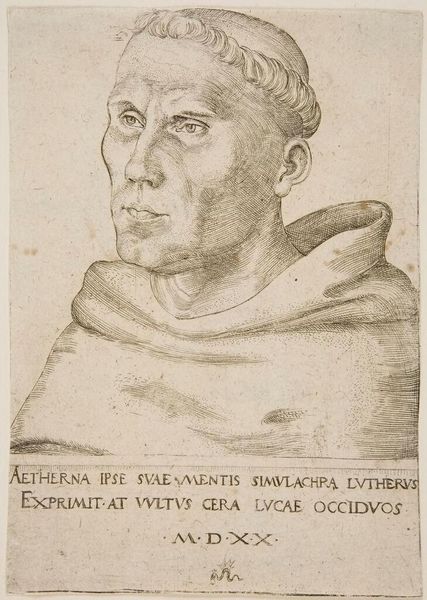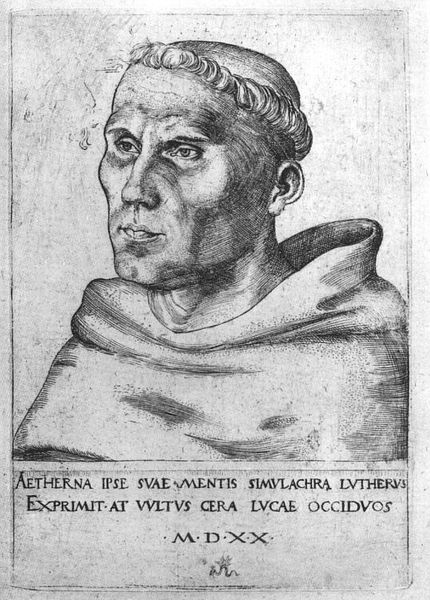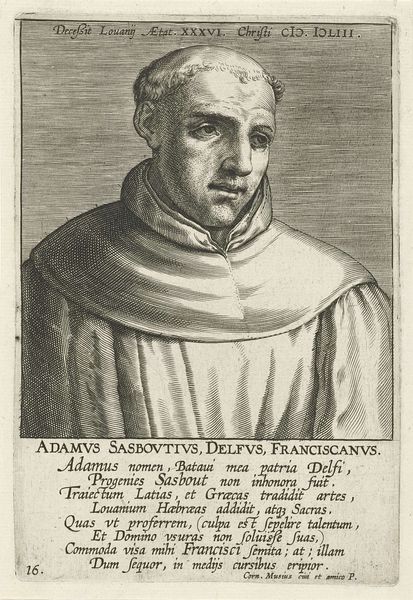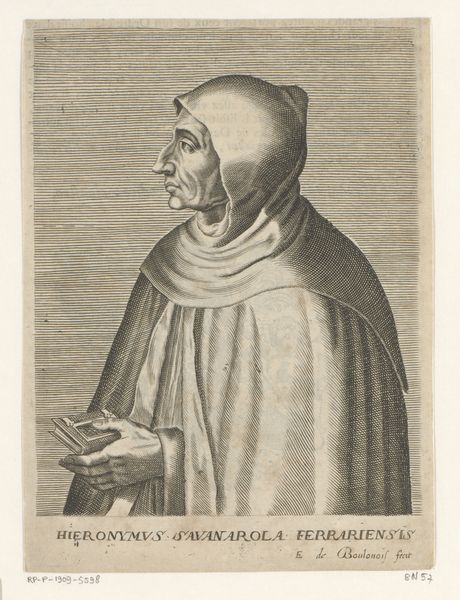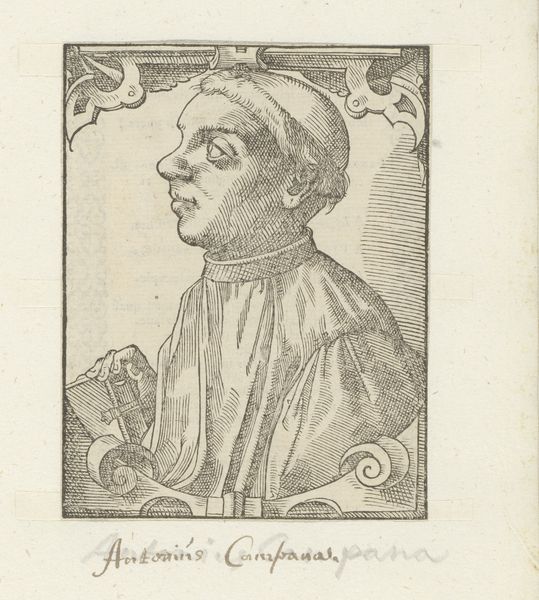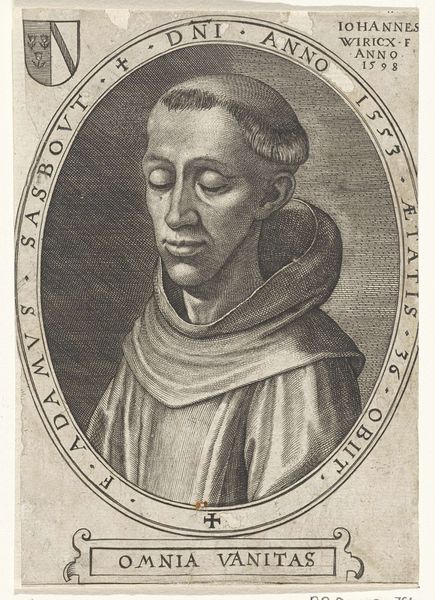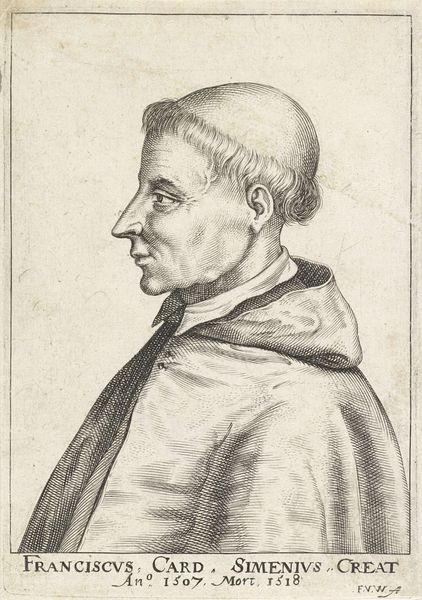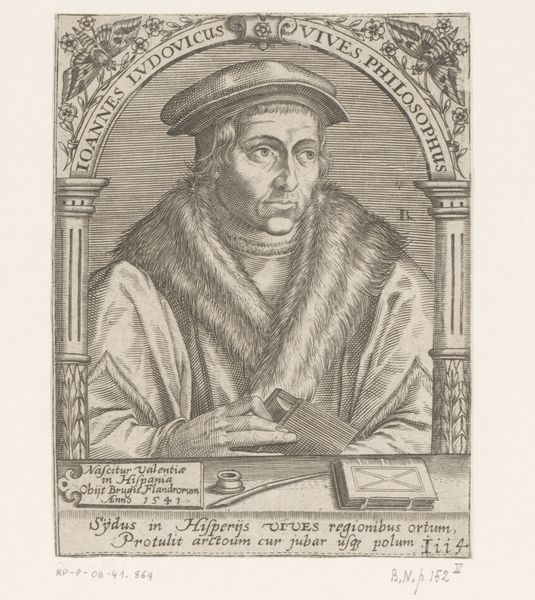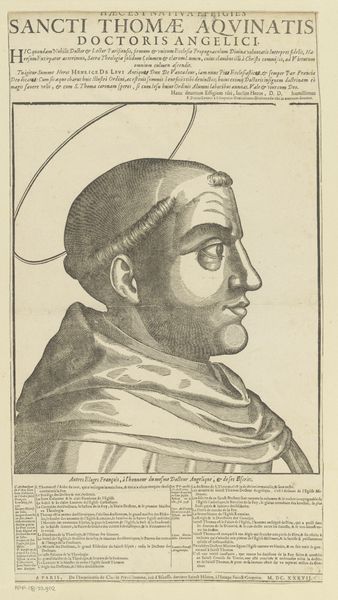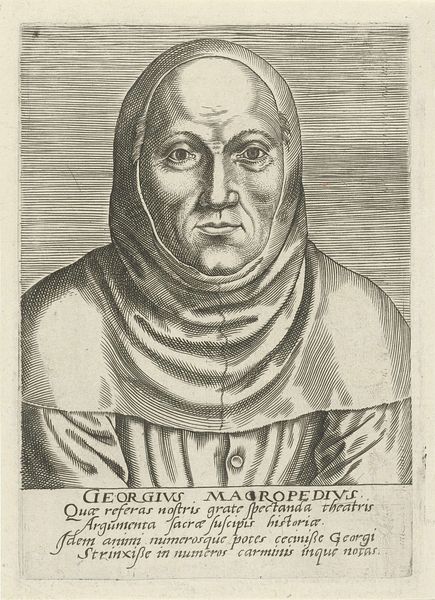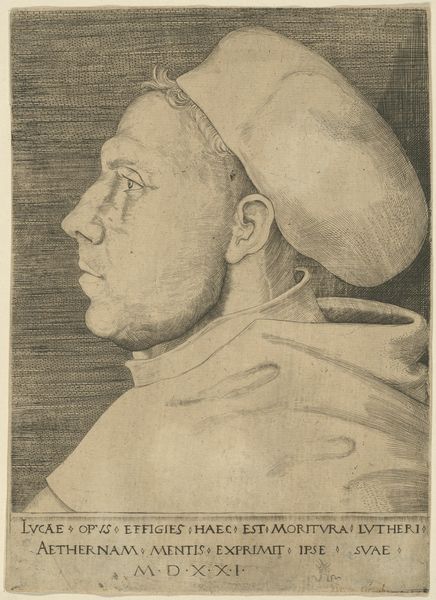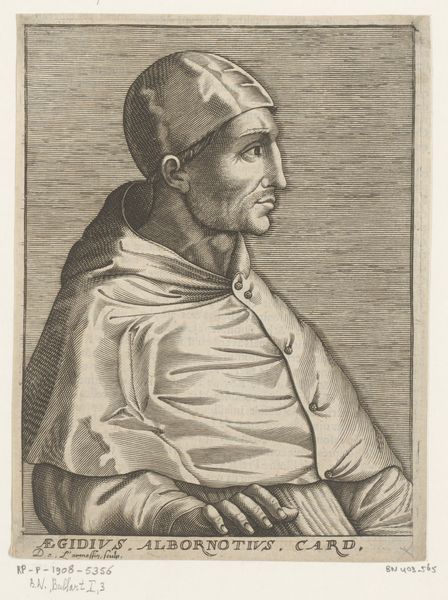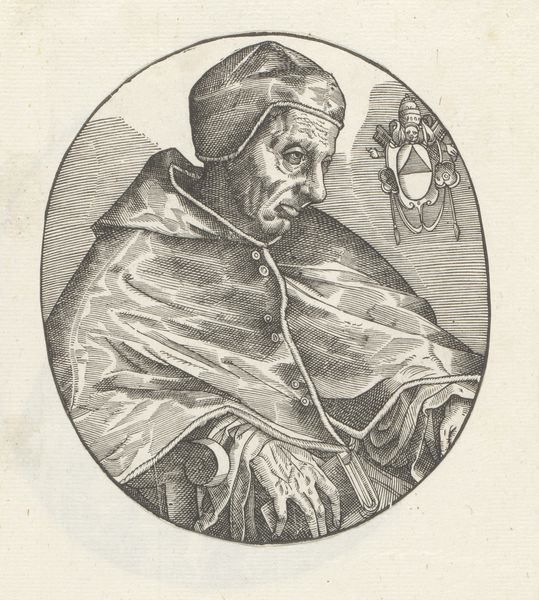
print, engraving
#
portrait
# print
#
history-painting
#
northern-renaissance
#
engraving
Dimensions: sheet (trimmed within plate mark): 14.1 x 9.7 cm (5 9/16 x 3 13/16 in.)
Copyright: National Gallery of Art: CC0 1.0
Lucas Cranach the Elder created this engraving of Martin Luther in 1520. The print coincides with a pivotal moment, as Luther was challenging the established order of the Catholic Church. This image reflects the complex politics of imagery at the time. Cranach was working in Wittenberg, Germany, where Luther was a professor. Note how Luther is presented not as a radical but as an Augustinian friar. This portrayal allowed for wider circulation and acceptance in a society still deeply rooted in religious tradition. The Latin inscription further elevates Luther, suggesting he embodies eternal wisdom. To understand such imagery, we delve into social history. Examining religious texts, pamphlets, and other artworks from the period reveals how Luther’s image was strategically crafted to navigate the tumultuous waters of the Reformation. The meaning of art here isn't just in its aesthetic qualities; it's deeply embedded in the religious and political context of its time.
Comments
No comments
Be the first to comment and join the conversation on the ultimate creative platform.
